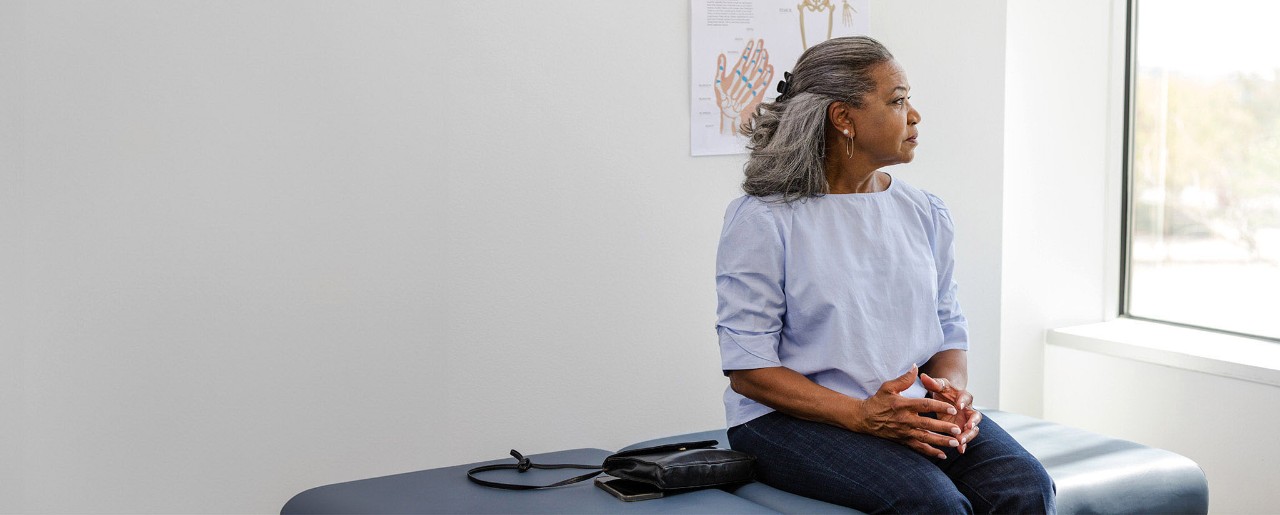Life after urinary incontinence treatment
“Instead of participating in the sports, I became the photographer.”
Renay shares how wearing pads and planning her trips around restrooms helped her cope with the symptoms of urinary incontinence, until she found a treatment option that was right for her.
“Going forward I have this peace of mind.”
Stephanie recalls how the symptoms of urinary incontinence interfered with “the everyday stuff” she loved, including exercise, and shares how her life has changed since seeking treatment.
Urinary incontinence treatment with the Solyx™ Single-Incision Sling
“To be free of stress urinary incontinence is so amazing. You get your life back.”
AJ shares how stress urinary incontinence affected her life. After receiving a Solyx™ sling, she’s back to riding her motorcycle and jumping on the trampoline with her grandchildren.
“I threw every last pad in my house away.”
As a young mom, Chandra struggled to keep up when stress urinary incontinence slowed her down. She found relief with the Solyx™ sling and could once again be an active member of her family.
“The number one thing patients say to me is ‘why didn’t I do this five years ago?’”
Urogynecologist Dr. Kevin Benson details the benefits of working with a Solyx™ sling and, ultimately, the benefit it provides to his patients.
Speaking out about pelvic organ prolapse
“I really was embarrassed and I didn’t want to live like this.”
Find out how Debra learned she had pelvic organ prolapse and how treatment improved her life.
Results from case studies are not necessarily predictive of results in other cases. Results in other cases may vary.
Individual recovery varies. Experience may not be representative of all cases.
Content of this video is for Information Purposes only and does not constitute medical advise. BSC strongly recommends that you consult with your physician on all matters pertaining to your health or to address any questions.
Boston Scientific is committed to bringing more hope, more health, and more life to women around the world. Learn about Boston Scientific's commitment to women's health
For FEMALE Mid-Urethral Slings: Caution: U.S. Federal law restricts this device to sale by or on the order of a physician trained in use of surgical mesh for repair of stress urinary incontinence. Refer to package insert provided with this product for complete Indications for Use, Contraindications, Warnings, Precautions, Adverse Events, and Instructions prior to using these products.
Potential risks associated with Boston Scientific Mid-Urethral Sling Products: The following adverse events and known risks have been reported due to suburethral (beneath the urethra) mesh sling placement, any of which may be ongoing, but are not limited to: Abscess (swollen area within the body tissue, containing a buildup of pus), Allergic reaction to the implant, Apareunia (inability to perform sexual intercourse), Bleeding from the vagina, Hematoma formation (bruising), Complete failure of the procedure/failure to resolve a patient’s stress urinary incontinence, Dehiscence of vaginal incision (opening of the incision after surgery), De novo detrusor instability (involuntary contraction of the bladder wall leading to an urge to urinate), Dyspareunia (pain during sexual intercourse), Edema and erythema at the surgical site (swelling and redness), Fistula formation (a hole/passage that develops through the wall of the organs) that may be acute or chronic, Foreign body reaction (body’s response to the implant) that may be acute or chronic, Infection, Inflammation that may be acute or chronic (redness, heat, pain or swelling at the surgical site as a result of the surgery), Irritation (redness or pain) at surgical site, Leg weakness (muscle weakness), Mesh contracture (mesh shrinkage), Erosion into the following organs: urethra, bladder, or other surrounding tissues and exposure/extrusion into the vagina (when the mesh goes through the vagina into other organs or surrounding tissue), Pain or discomfort to the patient’s partner during intercourse, Pain/Ongoing Pain/Severe/Chronic Pain in the pelvis, vagina, groin/thigh, and suprapubic area that may be acute or chronic (pain or ongoing pain just above the pubic bone, pelvis, vagina, groin/thigh area that may be severe and could last for a long time), Pain with intercourse that may not resolve, Perforation or laceration of vessels, nerves, bladder, urethra or bowel (a hole in or damage to these or other tissues that may happen during placement), Scarring, scar contracture (tightening of the scar), Stone formation (as a result of mesh erosion/exposure/extrusion in the urethra or bladder where the mesh is exposed to urine, mineral deposits may form along the mesh, also known as stones), Tissue contracture (tightening of the tissue), Voiding dysfunction: incontinence, temporary or permanent lower urinary tract obstruction, difficulty urinating, pain with urination, overactive bladder, and retention (involuntary leakage of urine or reduced or complete inability to empty the bladder from the mesh being implanted too tightly beneath the urethra). The following additional adverse events have been reported for the Solyx SIS System: Dysuria (painful/difficult urination), Hematuria (blood in the urine). The occurrence of these events may require surgical intervention and possible removal of the entire mesh. In some instances, these events may be permanent after surgery or other treatments. Removal of mesh or correction of mesh-related complications may involve multiple surgeries. Complete removal of mesh may not be possible and additional surgeries may not always fully correct the complications.
All images are the property of Boston Scientific. All trademarks are the property of their respective owners.


